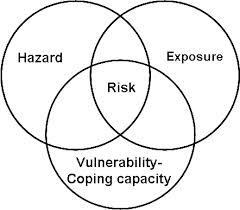In computer security, a vulnerability is a weakness which allows an attacker to reduce a system’s information assurance.
Vulnerability is the intersection of three elements: a system susceptibility or flaw, attacker access to the flaw, and attacker capability to exploit the flaw.[1] To exploit a vulnerability, an attacker must have at least one applicable tool or technique that can connect to a system weakness. In this frame, vulnerability is also known as the attack surface.
Vulnerability management is the cyclical practice of identifying, classifying, remediating, and mitigating vulnerabilities”[2] This practice generally refers to software vulnerabilities in computing systems.
A security risk may be classified as a vulnerability. The usage of vulnerability with the same meaning of risk can lead to confusion. The risk is tied to the potential of a significant loss. Then there are vulnerabilities without risk: for example when the affected asset has no value. A vulnerability with one or more known instances of working and fully implemented attacks is classified as an exploitable vulnerability — a vulnerability for which an exploit exists. The window of vulnerability is the time from when the security hole was introduced or manifested in deployed software, to when access was removed, a security fix was available/deployed, or the attacker was disabled—see zero-day attack.
Security bug (security defect) is a narrower concept: there are vulnerabilities that are not related to software: hardware, site, personnel vulnerabilities are examples of vulnerabilities that are not software security bugs.
Apply for Software Security Professional Certification Now!!
https://www.vskills.in/certification/certified-software-security-professional


